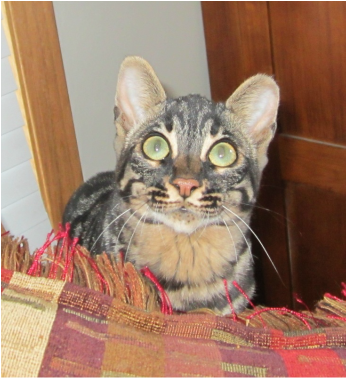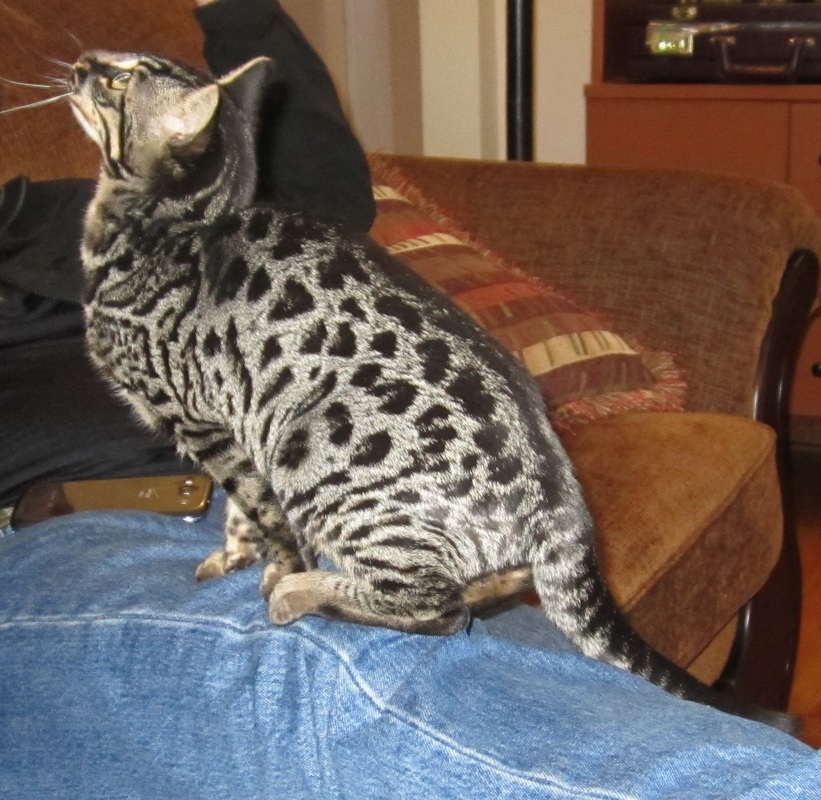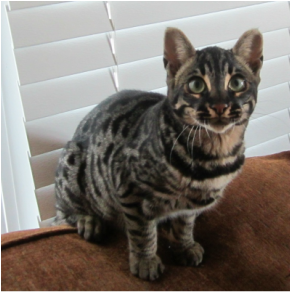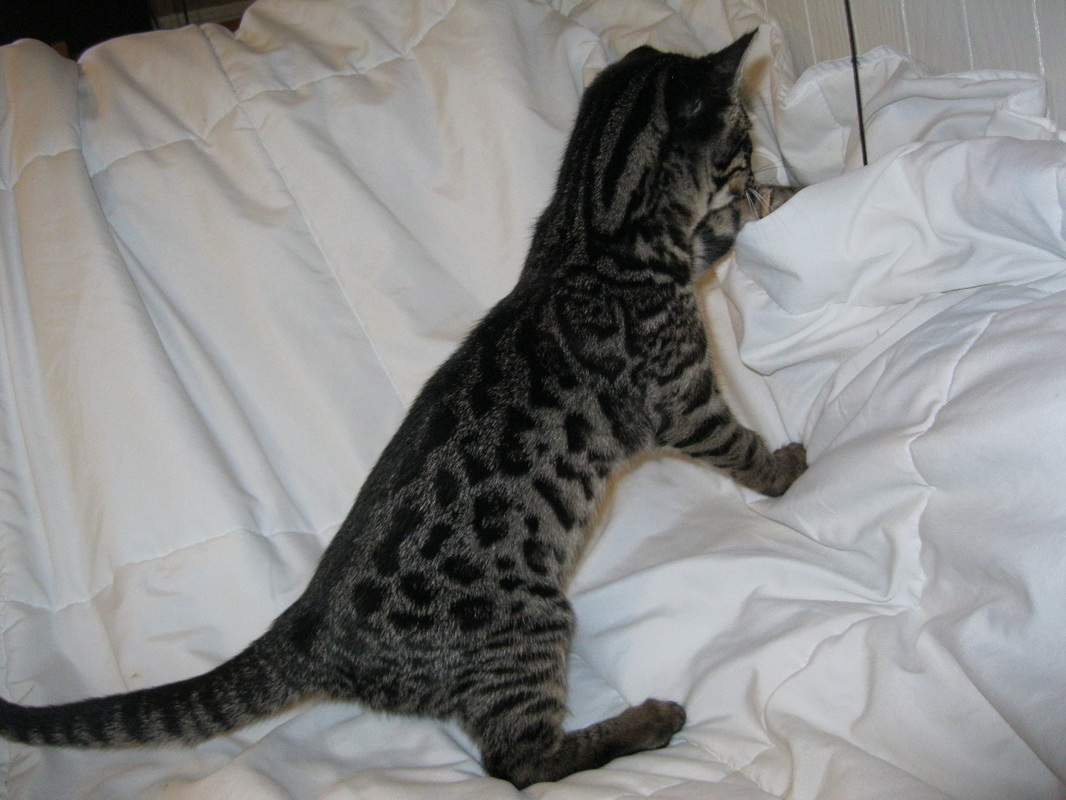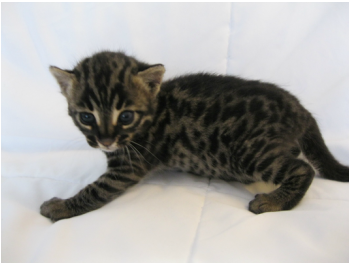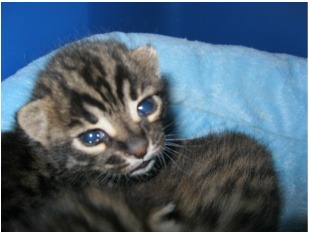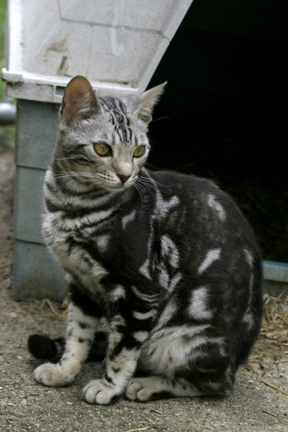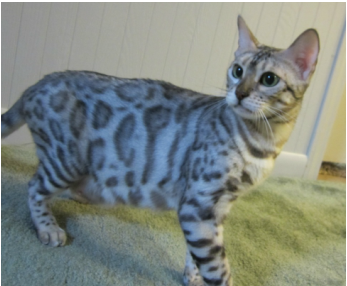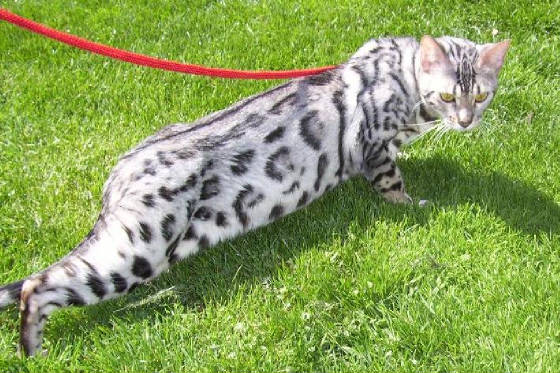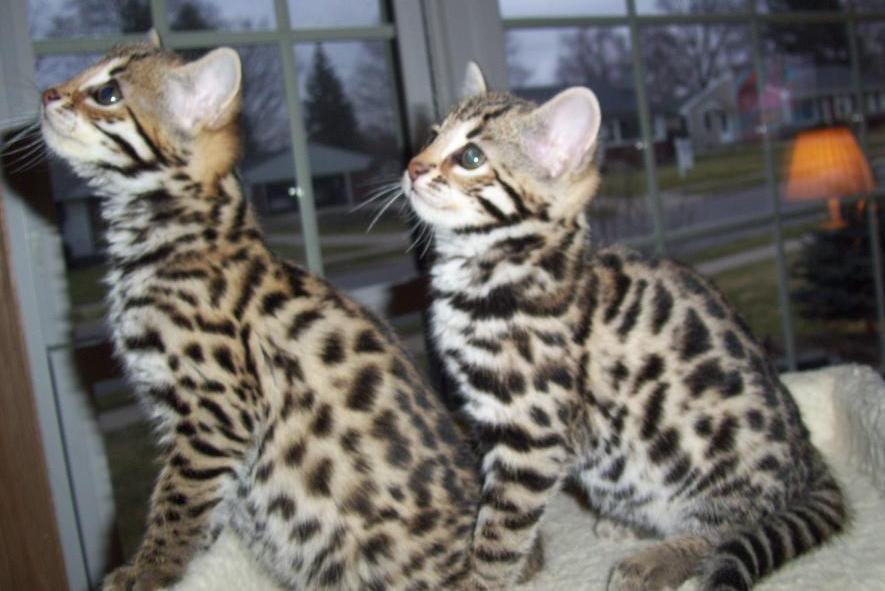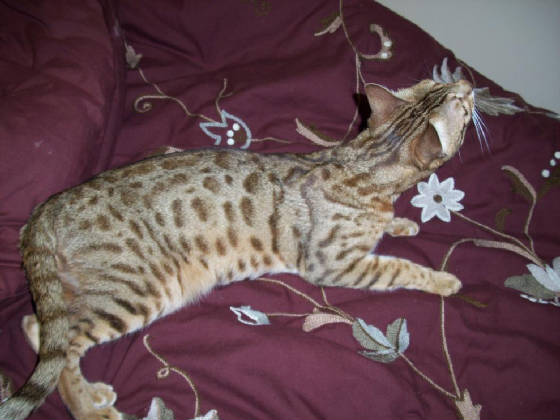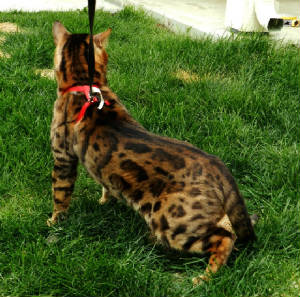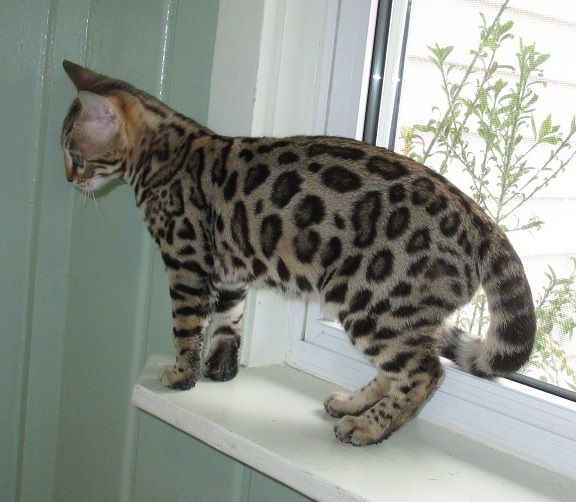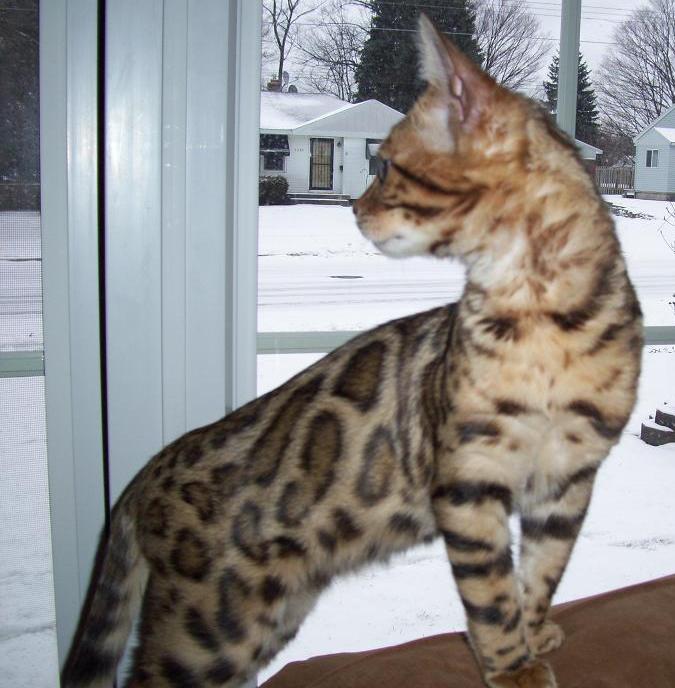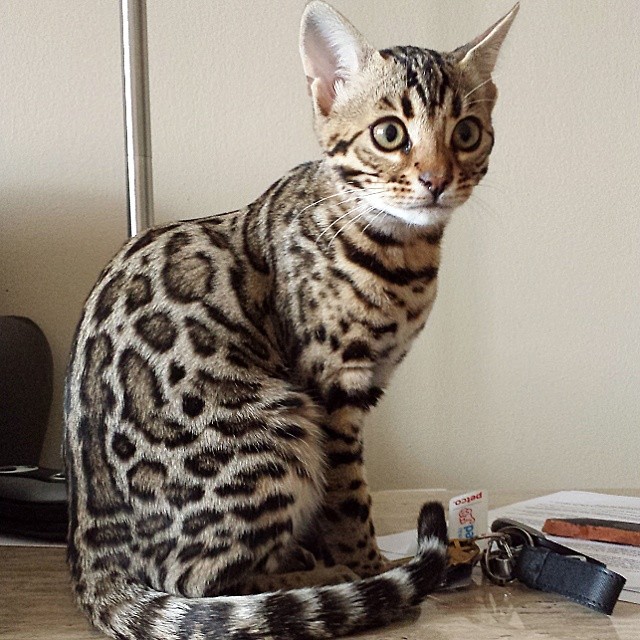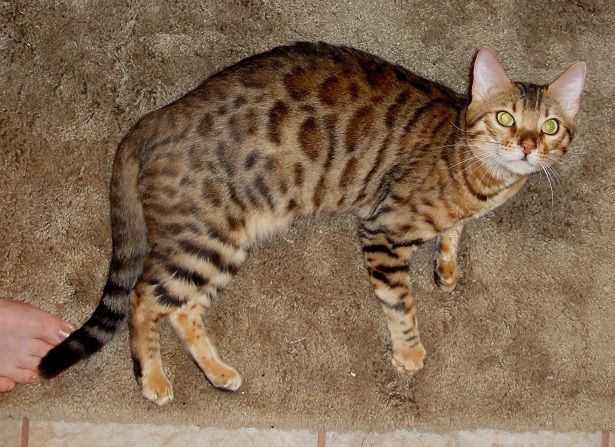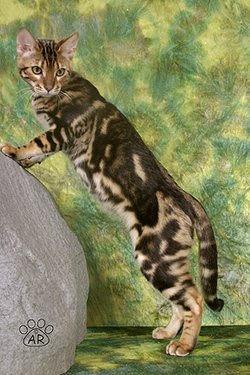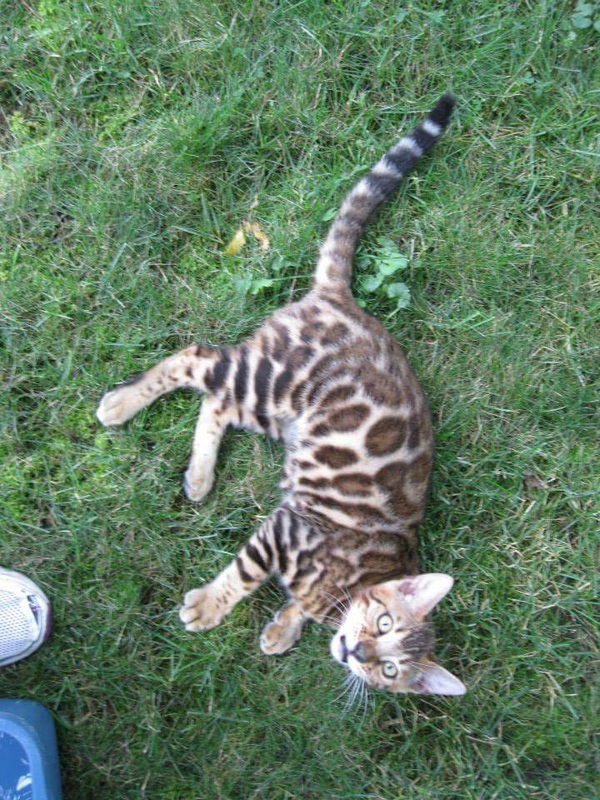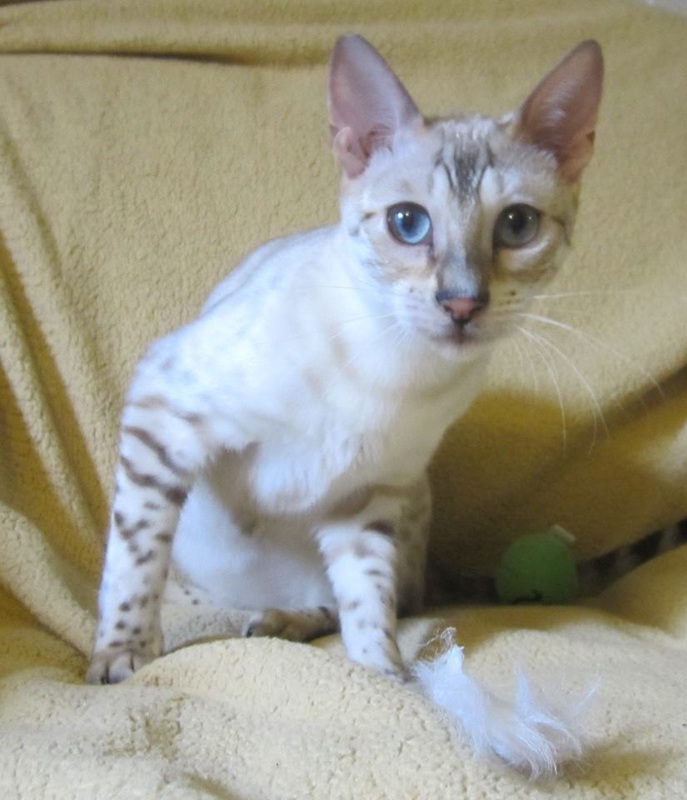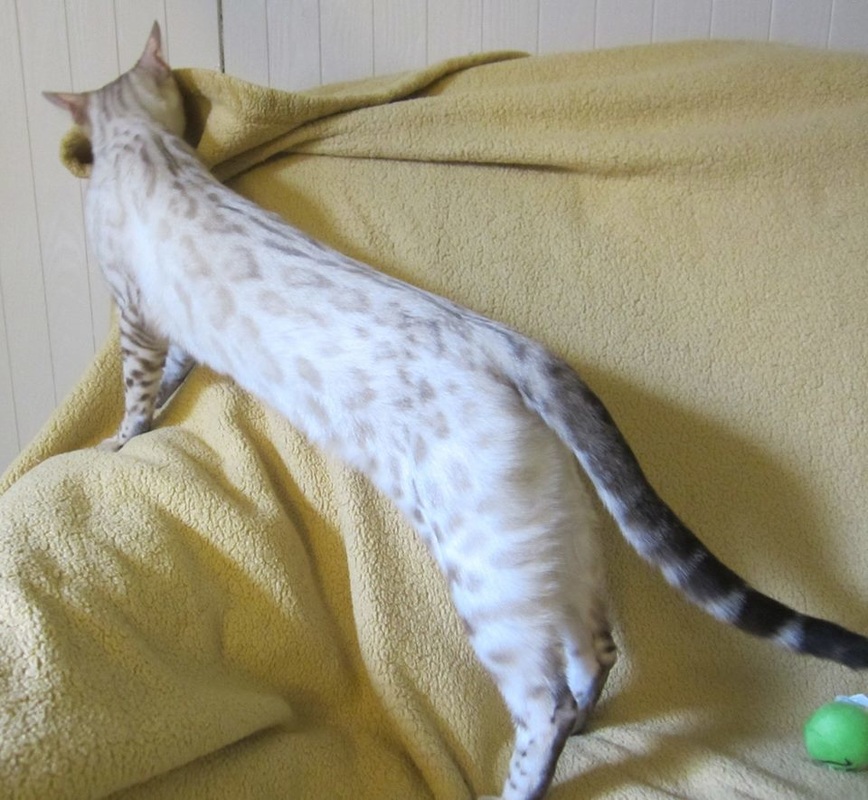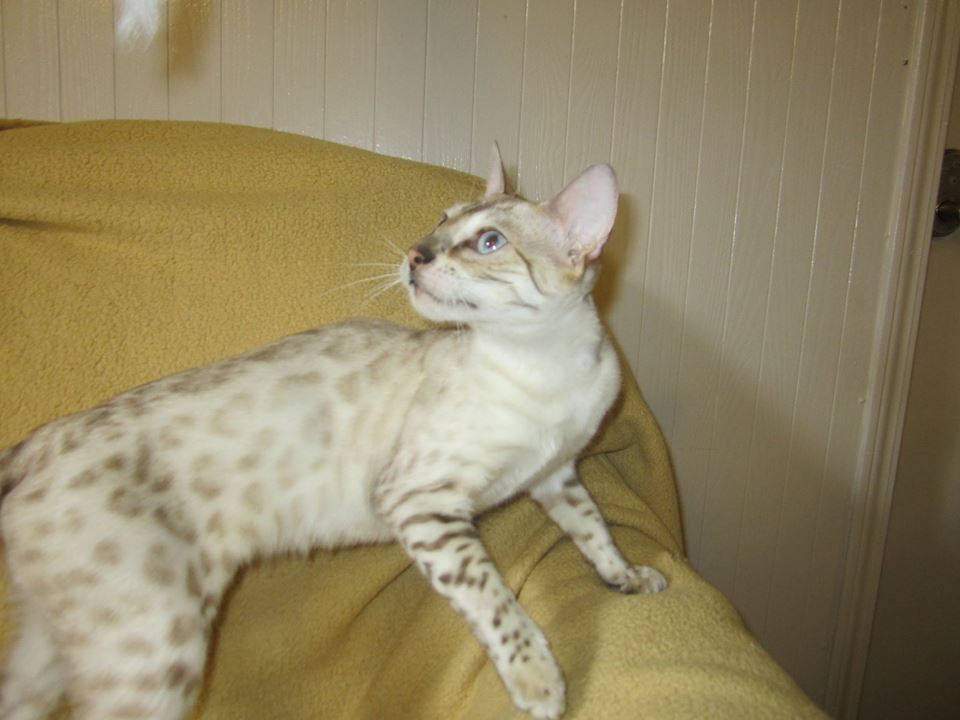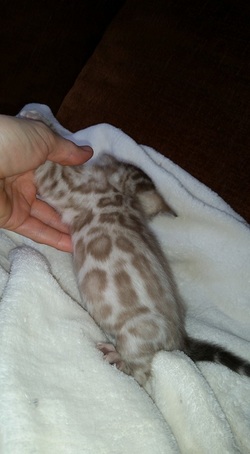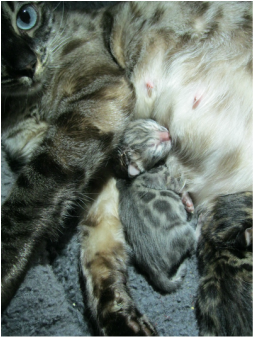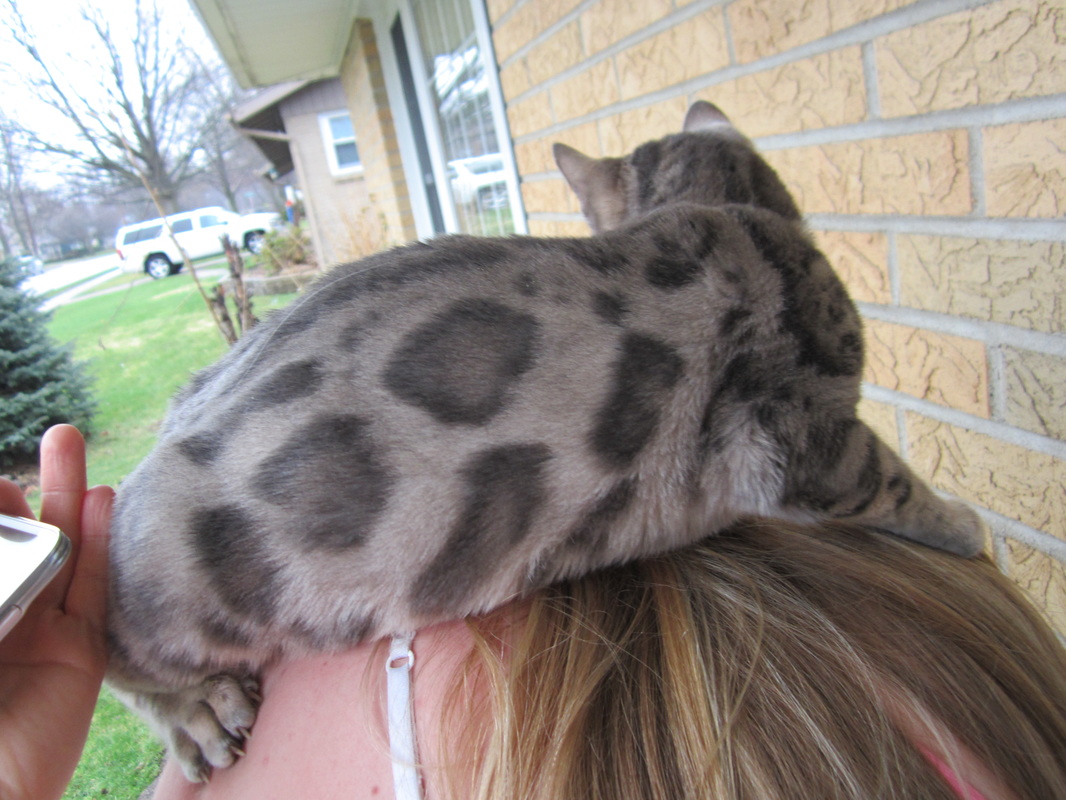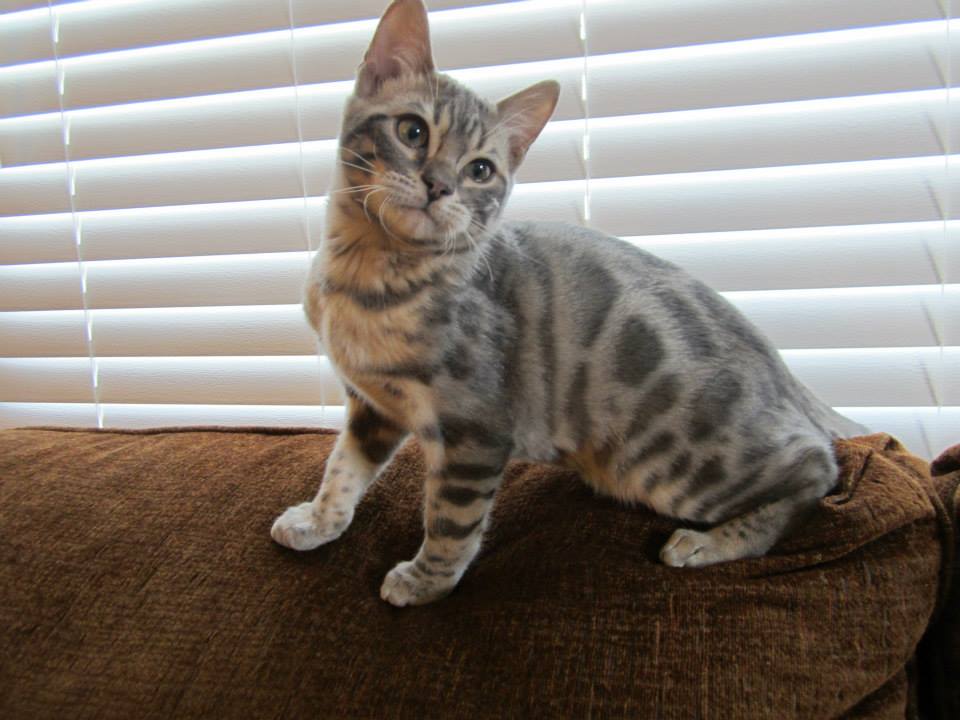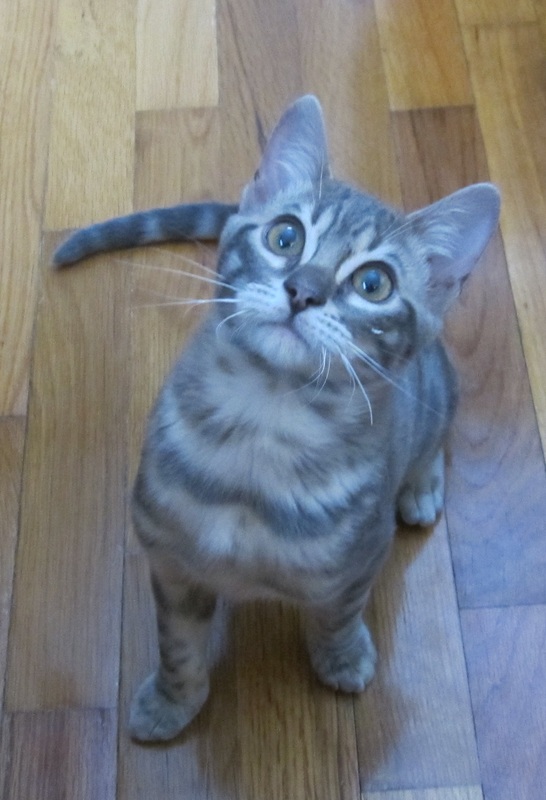RED is an extremely rare color in the Bengal breed with only a handful of breeders around the world producing this color. I typically have about 5 per year so if you are interested, please contact me to get on my waiting list if you want one in the future. This beautiful boy look like he will be a big boy. He has the highly desired white tummy and white goggles and seems to be showing a sweet temperament. Videos of him can be sent if interested by connecting with me on facebook at http://www.facebook.com/cathy.potter.3914
red bengals
Red Bengals are extremely rare and I find them absolutely stunning. I am beginning my color page with them because I developed this color and I am the first U.S. TICA Bengal breeder to develop this color in our breed. They continue to be a work in progress and should become more stunning as the years progress. I do not INBREED to produce my Red Bengals and have developed 3 separate lines to keep the genetics diverse. Just like Blue Bengals are not actually Blue but are a shade of grey, Red Bengals are a shade of Orange. They are NOT Cinnamon Bengals. While Cinnamon is a recessive color, Red is a Dominant color. This is a sex-linked gene so Red boys are much more common than Red girls. In order for a girl to be Red, she has to have 2 copies of the gene. If she only has one copy, then she is a Torbie. Torbie will be discussed below:
Torbie bengals
Torbie Bengals are simply stunning! When people ask me to describe a Torbie Bengal, is say it is like taking any color bengal and spraying it with bleach water. Everywhere the water lands, the coat turns a shade of orange. This color isn't just on the rosettes but the background also, which means half of a brown, black, or silver rosette could be orange and the other half the normal expected color. This splashing of color is completely random so a kitten many have many patches, or just one tiny patch somewhere on its body. When it lands on pawpads, the pads turn pink. I have yet to see any eye color change due to this patching. Torbies ONLY occur in female kittens.
Click here to watch a video of Omega at 4 wks
Click here to watch a video of Omega as a baby
CHARCOAL BENGALS
SILVER BENGALS
BROWN BENGALS
Brown Bengals are probably the most common color of bengals and all Asian Leopard Cats are also this color. Brown can range from a reddish brown, blackish brown, to very light brown or golden. Words commonly used by breeders to describe the visual differences in the browns are hot, sorrel, warm, cool, etc.... because these are not genetic terms and are subjective I am not labeling the pictures this way.
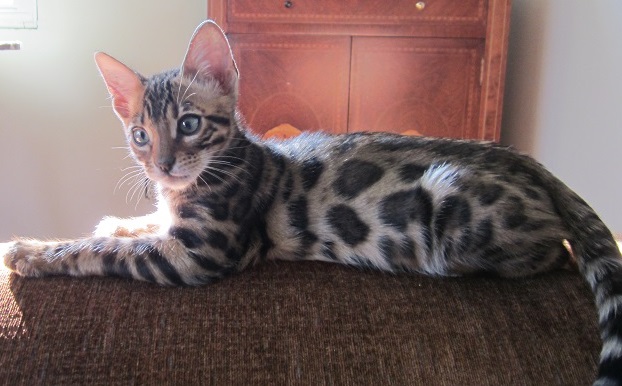
SNOW BENGALS
SEAL LYNX / SEAL MINK / SEAL SEPIA
SEAL LYNX / SEAL MINK / SEAL SEPIA
Pictured below is Niske. She is a Spotted Seal Lynx (blue-eyed) F3. She has an amazing profile and stunning long body. Her markings reflect the influence of her ALC line with beautiful open arrowhead markings.
Pictured below is a stunning Seal Mink Spotted male out of Saphire and Jazz.
THE EYES OF A SNOW BENGAL Bengals all have stunning eyes but the most beautiful of all the eyes, in my opinion, is the blue eyed snows. The SEAL LYNX bengals always have blue eyes. They can range from light sky blue to dark blue but they will never turn green. At times (and I believe recessive genes are responsible for this) there can be a hint of green around the outer edge of the blue. Seal Mink bengals have eyes that range between Aqua-> Green in color. Seal Sepia bengals eyes are the same as the brown bengals which can be Green -> Copper-> Gold -> ...there is NOW WAY to determine what color eyes your Bengal kitten will have once it reaches adulthood. Only the Seal Lynx bengals have eyes that stay blue.
Melanistic Bengal
Auroralights Ebony
Ebony is the first melanistic Bengal born here at Auroralights. This color is basically black markings on a black background. Although not preferred by pet owners due to the fact that seeing the leopard spots is virtually impossible as an adult, this color is desired by breeders because every kitten a melanistic mother produces will have vivid color and markings that don't fade over time. I also kept her because she is so extremely sweet (a temperament common in kittens out of her sire, Drinkwater Dakota).
DNA color panel aa BB Ccs DD
PK Def Negative
Mom : Wildcatmagic Key Lime of Auroralights
Dad: Drinkwater Dakota of Auroralights
F11 down from ALC Taro of Bundas (maternal side) and F11 down from ALC Baghara-Sergura Khan (paternal side)
DNA color panel aa BB Ccs DD
PK Def Negative
Mom : Wildcatmagic Key Lime of Auroralights
Dad: Drinkwater Dakota of Auroralights
F11 down from ALC Taro of Bundas (maternal side) and F11 down from ALC Baghara-Sergura Khan (paternal side)
Click here to watch a video of Ebony as a small kitten
Blue (Dilute) Bengals
Blue bengals are growing in popularity as breeders are starting to produce clearer coats in this color. Blue is actually diluted brown and is caused when a kitten inherits two copies of the dilute gene (d) from its parents.
